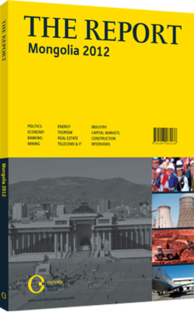Sharyn Gol: Mining
THE COMPANY: Originally a state company, Sharyn Gol was partially privatised and listed on the Mongolian Stock Exchange in 1995.
It became a 100% privately owned company in 2003. A New York-based company, Firebird Fund, recently acquired 61% of the firm. Since then, Sharyn Gol has undergone complete restructuring. In January of 2011, Sharyn Gol was named “the most transparent joint stock company” at an event organised during the 20th anniversary of the Mongolian Stock Exchange. Sharyn Gol is a single-asset company; its asset, Sharyn Gol coal mine, is located in northern Mongolia (215 km, or about a three-hour drive, from the capital, Ulaanbaatar), and is close to the country’s third-largest city, Darkhan.
Sharyn Gol coalfield was first explored in 1958. Production started in 1965. By 1975, the mine was producing 1.1m tonnes per annum (mtpa), and by 1980, had a capacity of 2.5 mtpa. Following the withdrawal of Soviet support, however, production had dwindled out. As of 2010-11, Sharyn Gol was producing only around 500,000 tonnes per annum.
Sharyn Gol is connected to the Trans-Siberian railroad via a dedicated 65-km rail spur. This gives the company an unusual advantage. The rail spur was constructed during the socialist period, and has a replacement value of approximately $100m.
As a result, Sharyn Gol has a distinct transportation cost advantage and does not have the burden of managing trucks, road construction, and maintenance that many other coal mines have. Sharyn Gol currently sells coal to the domestic market; 80% of the production is delivered to the Darkhan and Erdenet thermal power plants. All coal is sold run-of-mine with no processing.
Sharyn Gol produces thermal coal, and has 373.8m tonnes of Joint Ore Reserves Committee (JORC) resources of which 191m tonnes measured and 84m tonnes indicated. More than 90% of the resources is less than 300m in depth. Typical “air-dried” raw coal has calorific values of 4403-4428 kcal/kg. The exploration for determining JORC resources was conducted in two areas within the coalfield — South West Area & Satellite Area — and excluded areas known to contain significant amounts of coal. Thus further exploration could add new JORC resources.
On January 13, 2011, Sharyn Gol issued 1.3m new shares to finance a drilling programme, and to purchase new equipment, and converted MNT5.5bn ($4.3m) in debt to common shares with the approval of Financial Regulatory Commission.
Sharyn Gol’s revenue was MNT10.5bn ($7.9m) in 2008, but it decreased to MNT8.6bn ($6.7m) in 2009, before bouncing back up to MNT10bn ($7.8m) in 2010. The firm’s net income changed very little from 2009 to 2010, falling from some MNT220m ($171,600) to MNT215m ($167,700). However, total assets jumped from MNT9.5bn ($7.4m) at the end of 2009 to MNT22.5bn ($17.6m) at the end of 2010, a reflection of the significant increase in activities created by Firebird’s efforts to revive the mine.
DEVELOPMENT STRATEGY: Seeking to expand its operations, Sharyn Gol hired a consulting firm in 2010. It is currently involved in redeveloping its mining operations, with the goal of improving its products and becoming a mid-tier coal producer. The company’s plan is to first re-establish production to the original 2.5 mtpa capacity, and then to increase production over the next 2-3 years.
In addition, the company has plans to build a washing plant. Sharyn Gol is one of only a handful of companies listed on the Mongolian Stock Exchange that hires an internationally-known auditor (Ernst & Young). Furthermore, Sharyn Gol has hired a Mongolian law firm to conduct legal due diligence. Now that it is free from requirements to supply coal to the Mongolian government, Sharyn Gol can look to potentially selling to Russian and Chinese buyers, both of which have, in the past, expressed considerable interest in buying coal from the company.
You have reached the limit of premium articles you can view for free.
Choose from the options below to purchase print or digital editions of our Reports. You can also purchase a website subscription giving you unlimited access to all of our Reports online for 12 months.
If you have already purchased this Report or have a website subscription, please login to continue.

